I bought a five pack of Cinestill’s version of Kodak XX in 120 format (still available on sale as of this typing) and decided to use it to test out a bottle of 510 Pyro developer that I bought from CatLabs. I love Catlabs 320 and they recommend 510-Pyro for that film. And this review from Alex Luyckx suggested that the developer would be a good match for XX as well. Also, using 510 Pyro meant that I didn’t have to mix up any more D96, yay.
To get a sense of this film/dev combination I took a lot of photos of my dog. Everything was shot indoors using mostly natural light. All of these were metered at 200, not Cinestill’s recommended 250. (it’s called XX after all). Both rolls were developed the same:
- 510 Pyro (1+100) @ 20c for 7:00
- Constant agitation for the first minute, 10 seconds every minute thereafter
- No stop bath, rinsed in water for a minute
tl;dr version. I found that for indirect sunlight 200 ISO is fine. But for direct light I should meter around 350 or 400 ISO.
Your mileage may vary. Something I’ve discovered is that I like to print darker than most people. So a negative that may seem right to me may seem underexposed to you.
Roll One
While the light here is fairly direct, Rumble is on the opposite side of the couch from the illuminated window. There’s more opportunity for reflection/indirect light and the resulting mid-tones.
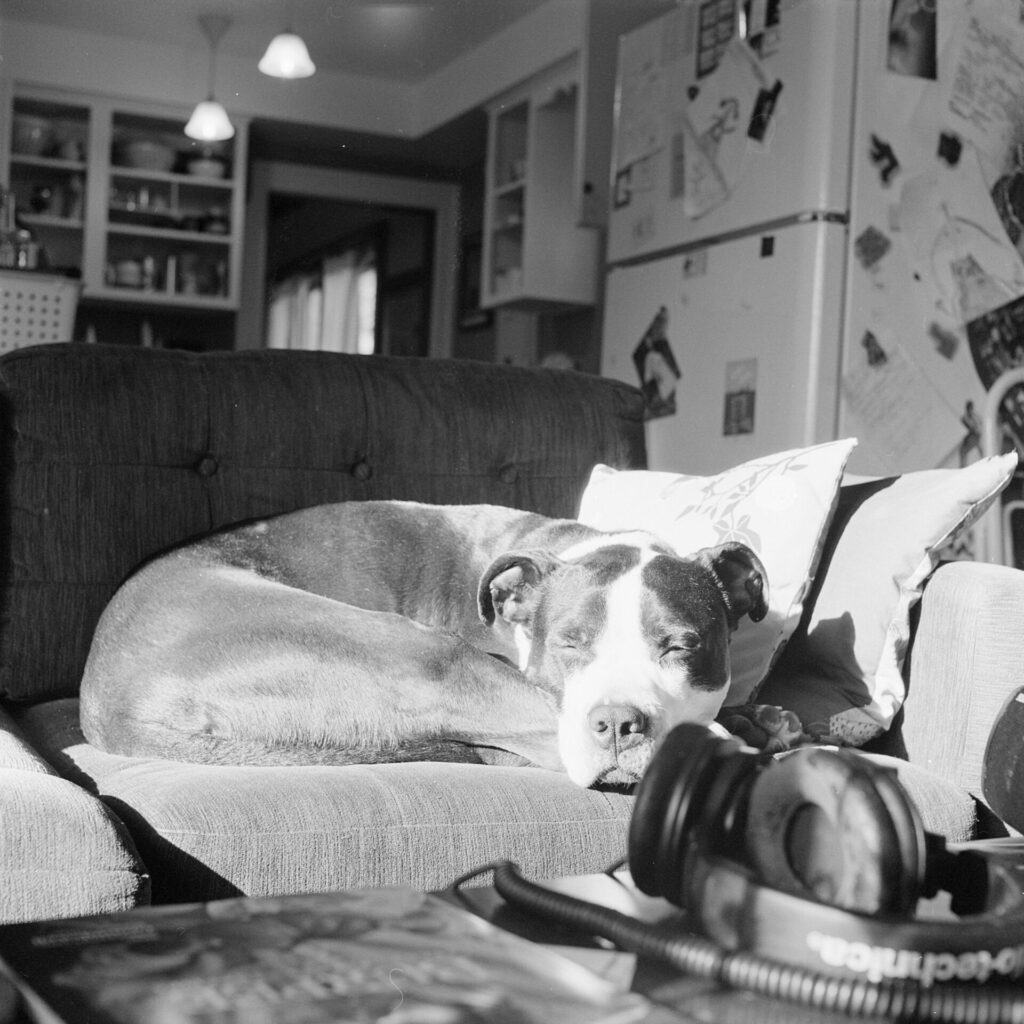
Here I metered on a shadow and then dropped the result by 1 stop. Which should put that shadow in zone four. That’s is close to what I see in the negative. I find the overall shot to be overexposed, though. Some highlight areas have no detail and are pure white.
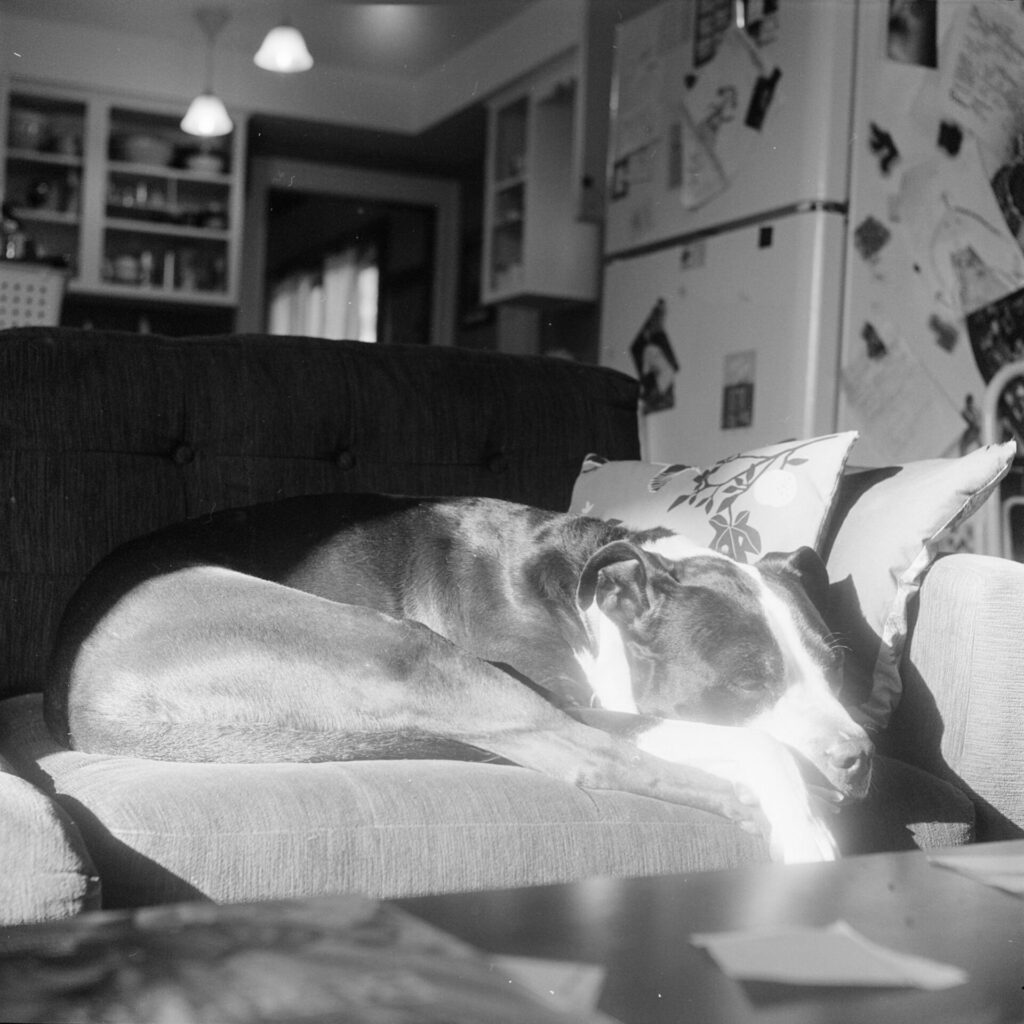
This one is two stops slower than the previous shot (-3 in shutter, +1 in aperture). It’s based on getting an average reading for the whole scene. Other than the weird glow around his paws I think this exposure is about what I wanted.
The glow, I think, is coming from light reflected off of the table in front of the couch.
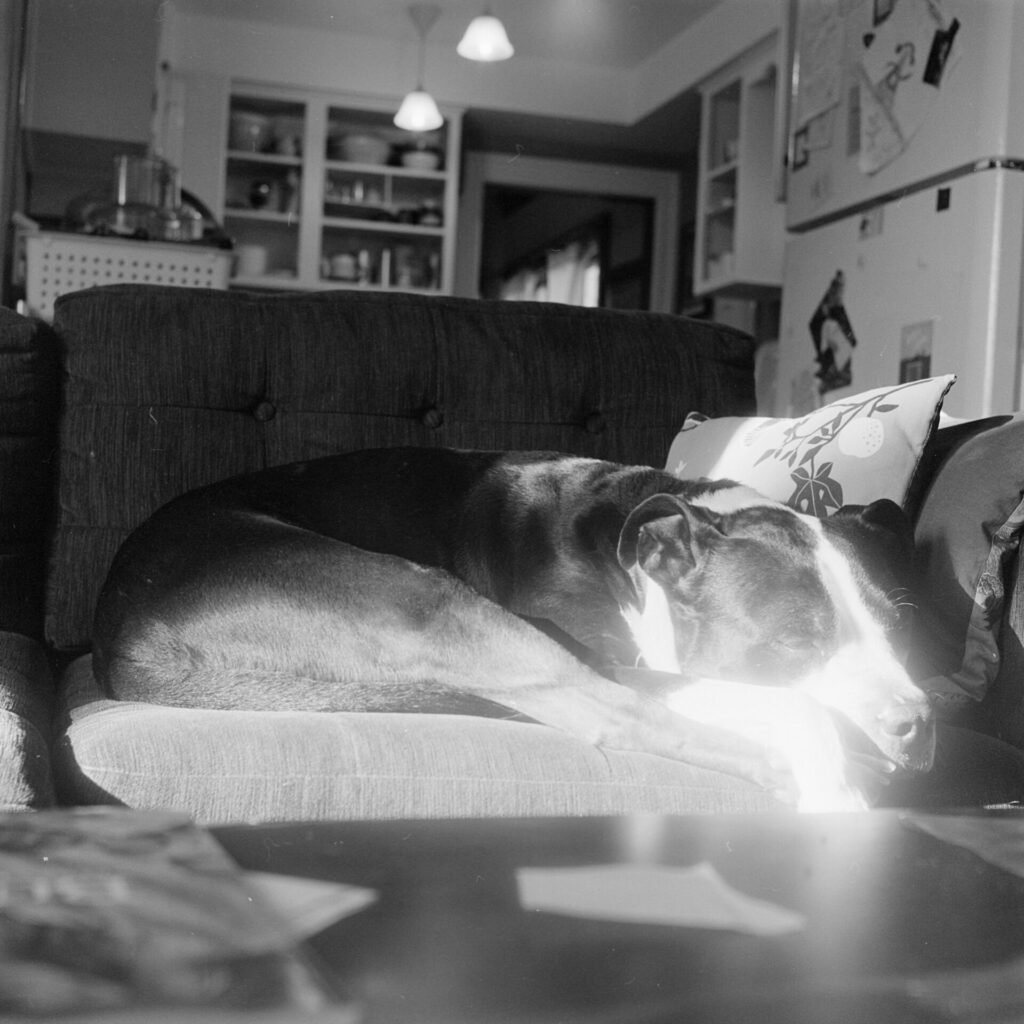
Effectively the same exposure as the previous shot, though with improved depth-of-field. And still the weird glow.
Roll Two
These show a lot more weird light artifacts. Likely should have used a lens hood here. Should probably use a lens hood with the Yashica Mat like 95% of the time, honestly. There may also be some damage due to me being real bad at using a changing bag.
These shots are higher contrast and involve a more direct light source due to Rumble’s location. He’s right at the illuminated window, and the contrast between the illuminated and shadowed areas is high. There’s a lot less indirect light here.
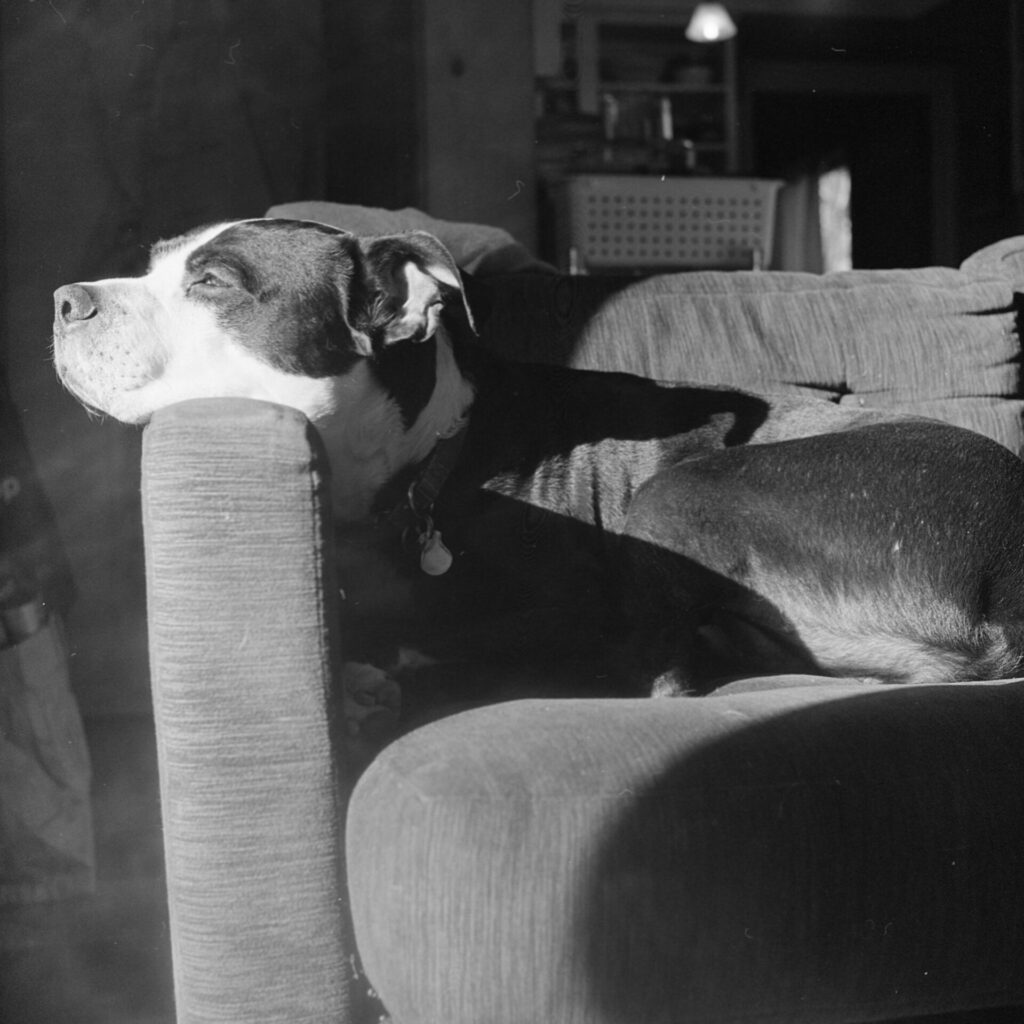
Pretty much exactly what I envisioned for this shot. The shadows are dark but still retain some detail. The bright white fur around his muzzle retains some detail. The highlights around the ear look really good.
Average metering here was 1/10, f11. So this shot is -2 stops from average. When shot with average metering the highlights are pure white.
I also found the -1 stop version to be nice, though it would probably require some burn in around Rumble’s muzzle.
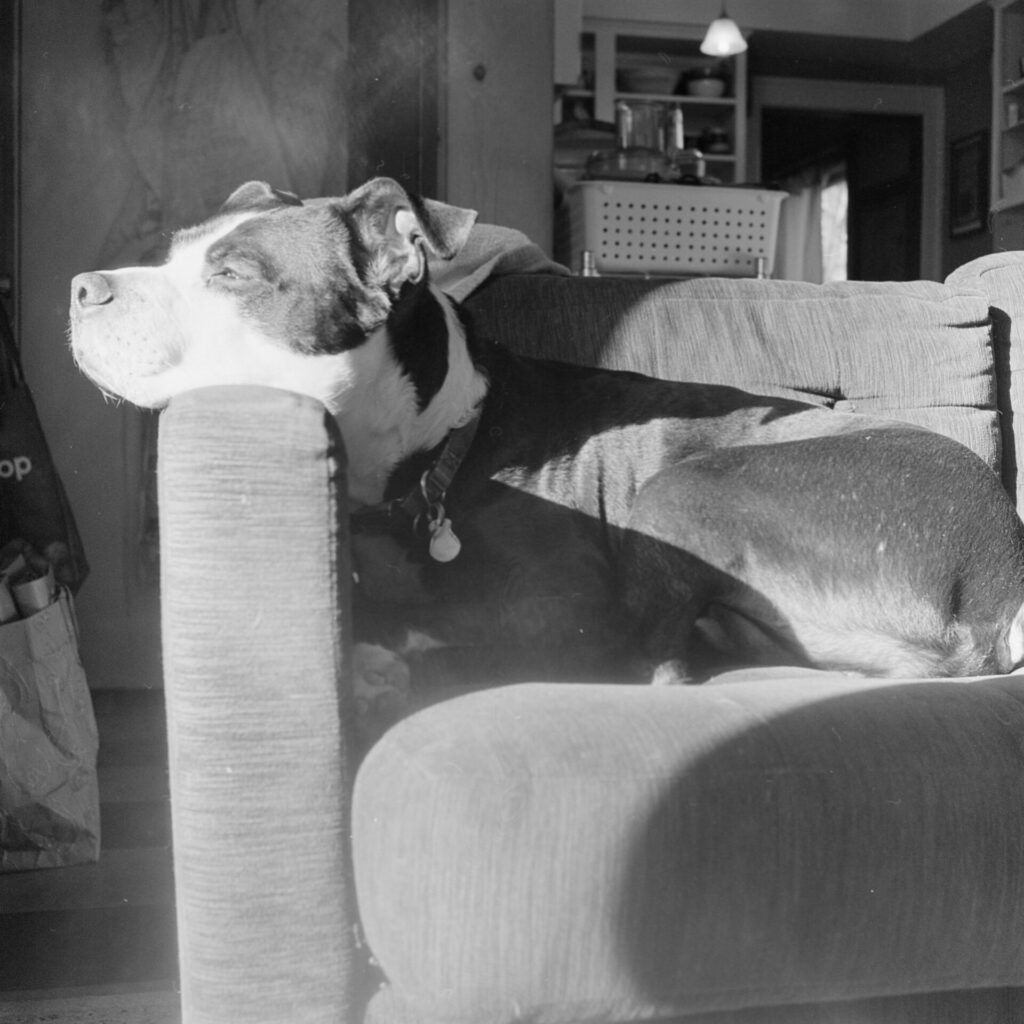
For this set of shots average metering was 1/5, f16 making this shot -1 stop.Similar to the above shot, though with increased depth-of-field and obviously more light throughout. I prefer the f11 version over this f16 shot.
Summary
In indirect light I think I should meter this film at 200 or 250. That first roll, with its more indirect light, worked well when shot closer to average metering at 200.
But in direct or high-contrast situations I should meter at 320 or 400. The average metering shots from Roll 2 are all way over exposed and I only got decent results when dropping 1 to 2 stops.
But this is not a hard and fast rule. Complicating things is that all of these photos were taken at minimum focal distance. Meaning that I’m probably losing 1/3 of a stop in light due to the lens being far from the negative. The lens on a Yashica Mat doesn’t move that much, it’s possible that I’m losing less than 1/3.
So for indirect light of a landscape (or other situations where I’m using longer focus) then I might treat my ISO as 160-200. Or 250-320 for direct light. This is probably overly pedantic. But I have a blog about photography, so maybe pedantry is to be expected.
Finally, who knows what these look like printed. As mentioned, these are all negative scans and I find the printed version to be more authoritative. Need to get some prints from these negatives to learn more.
Leave a Reply